A 'Brief' Biography of Author and Polymath, Edward Heron-Allen, 1861-1943
Privately Printed Opusculum, No. III, 2020
Issued to Members of the Tallahassee Sette of Odd Volumes
Late Bro. Necromancer of the London Sette of Odd Volumes
BY
Timothy J. McCann and John P. Mahoney
T. J. McCann, President, Heron-Allen Society
Brother Mahoney, Necromancer at the Tallahassee Sette of Odd Volumes
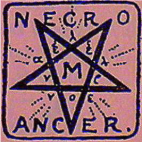
A Paper discussed at the 4th Meeting of The Sette of Odd Volumes on Wednesday, 20th May 2020 at The Governor’s Club TALLAHASSEE
Imprynted by O’Mahony Presse
MMXX
A ‘Brief’ Biography of Author and Polymath, Edward Heron-Allen, 1861-1943
Late Bro. Necromancer of the London Sette of Odd Volumes
Edward Heron-Allen was born in London on December 17, 1861. Brian Harvey, who wrote the article on Heron-Allen in the new Dictionary of National Biography, described him as having “the odd distinction of being a household name in certain disparate and esoteric fields some sixty years after his death, but virtually unknown to the general public.” (1). He was the fourth child of George Allen (1823-1911), a London solicitor with a well-established practice in Soho as Allen & Sons, and his wife, Catherine Herring. After two years at Elstree Preparatory School, he studied at Harrow School from 1876 to 1878. Edward did not go on to a University but entered his father's firm of Allen & Sons, Solicitors, established in 1786 by his grandfather Emmanuel Allen, as an articled clerk in 1879. However, before commencing legal practice, Heron-Allen took an extended tour of America as a palmist in November 1886. He wrote a daily diary recounting his adventures and impressions of American life and manners. He described evenings dining with Bram Stoker and General William Sherman, listening to Henry Stanley’s lectures and the preaching of Henry Ward Beecher, and visiting the first performance of Buffalo Bill’s Wild West Show. He published the first three of his several short novels and stories, some of an early science fiction type that have become collector's items (Kisses of Fate, The Princess Daphne, and A Fatal Fiddle.) Heron-Allen romanced the New York singer and actress Selina Dolaro and reportedly performed as a bare-back rider in the circus in Chicago. On the deaths of his elder brother and his lover Dolaro in 1889, the financially destitute ex-palmist suddenly gave up his bohemian life and arrived back at his London family law firm, never to return to America.
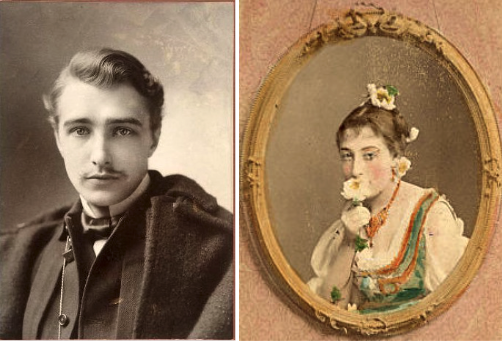
Palmist Heron-Allen and His Paramour Dolaro in America
He was a successful divorce lawyer. In 1901, the firm of Allen & Sons, of which he had become Senior Partner, was appointed solicitors and parliamentary agents to the City of Westminster, and he took charge of the city's parliamentary practice. He married Marianna Lehmann, daughter of the artist Rudolph Lehmann and sister of the composer Liza Lehmann, who wrote In a Persian Garden. These relationships allowed him to enter London's literary, artistic, and musical life. Heron-Allen found time to act on the West End stage, to compose songs, to found, author, and edit the Violin Times Magazine, to found an orchestra (The Strolling Players Amateur Orchestral Society), to write biographies of all the famous violinists for the Dictionary of National Biography, and to translate German works together with his wife. His first wife died suddenly in 1902, reportedly of a surgical fertility procedure. The following year, during a long holiday in Egypt, he met Edith Pepler, whom he married the next November. Edward and Edith Heron-Allen had two children - Ianthe Theodora (known as Itha) and Armorel Daphne. Following his father’s death in 1911, the 50-year-old Heron-Allen retired from his law practice and spent the rest of his life in various scholarly and literary pursuits. In his recently published Journal of the Great War, he wrote: “I am thankful that from my earliest years, while I was by profession a lawyer, I have always had some strongly pursued hobby, which occupied all my leisure hours and have carried these hobbies to the point of minute study resulting in a considerable number of published volumes. I refer to the violin, the hand, Umar Khayyam, and the foraminifera.” (2). So, let us look at some of the diverse interests of this true polymath. He left Harrow School obsessed with three dominant goals: the origin and ancestry of the violin, palmistry, and the beauty and mystery of the Foraminifera (marine single-celled planktonic organisms with chalky shells.)
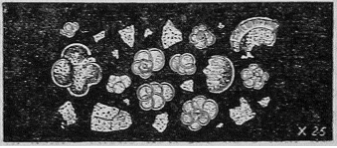
Marine Chalk deposits with Foraminifera shell fragments
Stringed Instruments
At Harrow, Heron-Allen became proficient with the violin under the tutelage of violin master Otto Peiniger. He learned the viola under William Henry Hill at W.E. Hill & Sons, London violin dealers. As part of his study of the history of the violin, the 21-year-old amateur violinist devised a now universally accepted theory of the ancestry of the violin and presented his thesis at the London Sette of Odd Volumes in 1882 at the request of its President, Bernard Quaritch. (3) Quaritch guided Heron-Allen into the Sette’s membership in 1883, and he became Brother Necromancer. The Sette elected him its President in 1927.
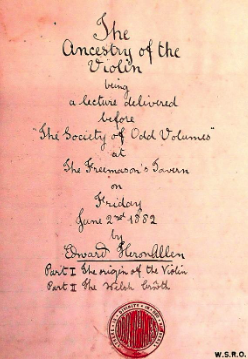
Original manuscript, 1882, Sette of Odd Volumes
Heron-Allen co-founded an orchestra - the Strolling Players Amateur Orchestral Society (4) - and was a pioneer in the encouragement of female musicians. His diaries reveal that he entertained by playing his violin at dinner parties and receptions. In 1885, because of his work on the history of musical instruments, especially the violin, Italy appointed him as their special Commissioner for collecting ancient musical instruments and manuscripts for the historic loan collection in the music section of the Invention's Exhibition that year. In the same year, he joined the Dictionary of National Biography staff and wrote most of the articles on renowned violinists. The celebrated London luthier, George Chanot, unofficially apprenticed Heron-Allen; he made two violins, both surviving (5). Heron-Allen wrote: “I worked hard for two years and produced two violins. One of these, copied exactly from the late Prosper Sainton’s Guarneri, has been continually played upon since, and I would rather play today upon this instrument than upon any other that has passed through my hands.” (6) Gimple Solomon, in a recent article in The Strad, opined that “as far as we are aware, he never did take up the gouge again. Had he done so, judging by his second violin, among his many and varied talents, he would have become a first-class maker.” (7)

Heron-Allen’s Restored Guarnerius-Copy, Violin No. 2
At the age of 23, Heron-Allen published Violin-Making as it was and is in 1884 (8), which remains the standard work on the subject., and is the only complete treatment on the practical construction of the instrument. The essential parts of the book were originally written, as he explained, for a series of articles for Amateur Work Illustrated, published between 1882 and 1884. The book has remained in print ever since. Contemporary opinion was mainly favorable.
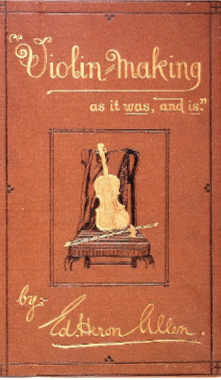
First Edition of Violin-Making, 1884
Heron-Allen published nine signed limited edition opuscula on various violin subjects titled De Fidiculis Opuscula. He released the first, The Ancestry of the Violin, in 1882 and the last, The “Nefer” Sign, in 1941. While still at school, he began his collection of stringed instrument books, and it rapidly became the foremost collection in England, including many works not in the British Library. He published a bibliography of the violin in eleven parts based on his collection entitled De Fidiculis Bibliographica in 1890-1894, which comprised about 1,400 items. (9)

Eleven part De Fidiculis Bibliographica, 1890-1894
Heron-Allen wrote a series of articles for the new violin magazine, The Strad, under various pen names such as ‘Florian.’ Some readers invoked strong dissent when the reports suggested a bias against women violinists. Heron-Allen was co-editor with Edward Polonaski, the founding editor of the Violin Times Journal (1893-1907.) Heron-Allen wrote many articles in the earlier editions, often with pen names. He also wrote numerous sections on violins and violinists for the second edition of Grove's Dictionary of Music & Musicians. He maintained his interest in music, and in 1924, he assisted W.W. Cobbett in the foundation of his Encyclopaedia of Chamber Music. Perhaps inevitably, he also wrote music, and the score of his song, The Ballade of my Lady’s Glance, was recently discovered, as has an unpublished melody by Edward Heron-Allen arranged by Liza Lehmann titled, ‘Song and Dance of Itha,’ a short piece that was purchased from Heron-Allen’s estate by Henry Farmer, the well-known musician. His massive music collection is now at the Royal College of Music in London. (10) By a codicil to his will, made in 1940, Heron-Allen bequeathed the two violins he made and described in his book Violin Making as it was and is to the Royal College of Music in London for preservation in their museum, and he included the whole of the works relating to the violin and all other books and other documents in print or manuscript relating to the history and practice of music in general which were contained in his library at Selsey, and even the autographs and other documents relating to the violins and Viotti to the Library of the Royal College of Music. According to the Rev. W. Meredith Morris, Heron-Allen possessed one of England's most extensive collections of unpublished autograph letters of violinists. (11)
Palmistry
Early in life, Heron-Allen developed an interest in reading personality by studying hand and finger formation. In explaining the scientific basis of cheirosophy, he first came to public prominence because of his interest in and expertise in palmistry. Heron-Allen’s contributions to the field of palmistry are rich and varied. He provided a historical overview of the subject and a practical handbook. In addition to writing books, he participated in private seances and lectures. He preferred to use three ancient terms, all starting with the Greek word cheiro, which means ‘hand,’ cheiromancy (divining the future by looking at the lines of the hand), chirognomy (the shape of the hand), and cheirosophy (hand wisdom or knowledge). Cheiromancy is an ancient subject discussed by classical authors: Aristotle wrote on the crucial functions of the hand. Heron-Allen’s first major publication, in 1883, Codex Chiromantiae, was originally a lecture delivered to the Sette of Odd Volumes, an exclusive dining and literary society founded in 1878 by the antiquarian bookseller Bernard Quaritch. (12)
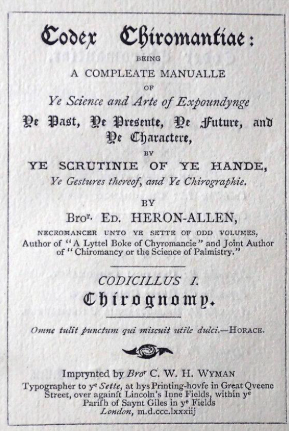
Opusculum No. 7, Sette of Odd Volumes, 1883
His original intention was to produce a series of little books on the Hand, but he abandoned the idea and used much of the material in his A Manual of Cheirosophy, published in 1885. The full title proclaims A Complete Practical Handbook of the Twin Sciences of Chirognomy and Chiromancy by means whereof the Past, the Present, and the Future may be read in the Formations of the Hands.
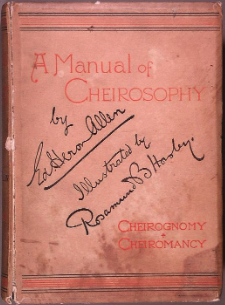
A Manual of Cheirosophy, 1885
This book, and his The Science of the Hand, published in 1886, went through many subsequent editions and established his reputation in the field. It is clear from his diary that he entertained in polite society by reading hands and playing the violin. His reputation led to a request from Oscar Wilde for him to read the hands of his two children, resulting in the subsequent friendship between the two families. Heron-Allen may have provided Wilde with the palmistry plot, which focused on a Cheiromantic, in Wilde’s story, Lord Arthur Saville’s Crime. Heron-Allen’s 1888 novel Ashes of the Future (A Study of Mere Human Nature): The Suicide of Sylvester Gray was an important and much-overlooked influence on Wilde’s The Picture of Dorian Gray. Heron-Allen’s public and published expertise led to an invitation from the celebrated agent, Major J.B. Pond, to go to the United States in November 1886 on an extended lecture tour, the subject being cheirosophy. The trip was successful and remunerative. Heron-Allen spoke and demonstrated in New York, Boston, Chicago, and many other American cities from his base at the Everett Hotel in New York. He was a member of the Society of Psychical Research for a time and may have written articles under a pseudonym. Heron-Allen had doubts about religious beliefs in the afterlife, the gods, and the current social rage of psychical research. He described himself as having, ‘all his life, attended adult seances at intervals,’ but confessed that ’he never witnessed any phenomena that he could not reproduce as “parlour tricks.” He feared the stigma of the promoter of a charlatan science and the legal consequences of fraudulent activities. After 1889, he played down any involvement with palmistry. The authors suspect that some of his colleagues belittled Heron-Allen’s later significant scientific and literary achievements because of his prior annoying sponsorship of the sham pseudoscience of palmistry.
Literature Heron-Allen was a student of many languages, interested in Persian and Turkish. In 1885, he began his study of the Persian language, primarily attracted by Edward Fitzgerald's Rubaiyat of Omar Khayyam. He learned the Turkish language colloquially from the Armenian Representative in London. With Prince Malcolm Khan, the Persian Minister in London, Heron-Allen developed an oriental alphabet capable of being cut and composed as a moveable type. As a Persian scholar, he published in 1898 a literal translation of the Rubaiyat of Omar Khayyam. (13)
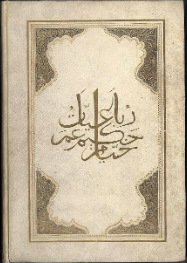
Heron-Allen’s Rubaiyat of Omar Khayyam, 1898
In 1901, he translated The Lament of Baba Tahir from an almost unknown Persian dialect called Luri. The latter book is still in print. From 1913 onwards, he frequently delivered a lecture entitled On the Place of the Rubai in Persian Poetry, a feat of memory that required him to recite Fitzgerald's entire Omar Khayyam. Heron-Allen’s initial interest in the Rubaiyat arose from the then-burning question of how far Edward Fitzgerald’s verses were faithful versions of Omar Khayyam’s originals. His first book, published in 1897, analyzed all the quatrains, examined them against various manuscripts, and concluded definitively in favor of Fitzgerald. The following year, his second book was a facsimile of the Bodleian manuscript of the quatrains with Heron-Allen’s literal translation of each verse. He bequeathed to the London Library his entire collection of the works of or connected with Edward Fitzgerald and all interpretations and texts of Omar Khayyam, consisting of more than 300 books and portfolios. (14) His literary output was considerable and varied. It includes short stories, notably The Purple Sapphire in 1921, The Strange Papers of Christopher Blayre in 1932, and Some Women of the University in 1934. He privately printed The Cheetah-Girl, once regarded as obscene, in a run of only twenty copies and remains a much sought-after treasure. The Tartarus Press recently reprinted this short story and other novels, such as The Princess Daphne, that he published in America in the 1880s under various pennames. He published several books and stories of an early science fiction type, which have become collectors’ items and reflect his fascination with the border between science and the occult.

The Cheetah-Girl, 1923

The Strange Papers, 1932
He also published poetry and archaeological and historical works, most notably his history of Selsey in 1911. Writing as Christopher Blayre in his Notes upon the Literary, Scientific, and Artistic Activities of Edward Heron-Allen, FRS, he claimed to have written and acted in a series of drawing-room duologues in 1895, some of which he published in magazines, such as A Birthday Present, a Duologue for impromptu Performance in The Idler Magazine in 1896. The Story of the Purple Sapphire has recently brought Heron-Allen to public attention again. The story was published under the pseudonym of Christopher Blayre and recently republished by the Heron-Allen Society. The story is about a precious stone that brought misfortune to everyone who owned it. The original stone that gave rise to the story is more famous now, even than the story. The purple Sapphire, an amethyst, was brought to England by Colonel W. Ferris, a Bengal cavalryman, after being looted from the Temple of Indra in Kanpur during the Indian Mutiny in the 1850s. The Colonel quickly lost his money and health, as did his son, when he inherited it. A family friend, who possessed it for a short time, committed suicide. Heron-Allen accepted the stone in 1890. Misfortunes immediately beset him. He claimed to have seen an Indian spirit digging at the floor of his library in Selsey ‘as if searching for it.’ Two friends to whom he gave the stone suffered disasters. He claimed to have thrown the amethyst into Regents Canal, only to have it returned to him three months later by a dealer who had purchased it from a dredger. In 1904, Heron-Allen gave up on the cursed amethyst, packed it into seven boxes, and deposited it in his bank. It remained until a year after his death when his surviving daughter presented it to the Natural History Museum. The stone remained, almost forgotten, though we exhibited it at the first Heron-Allen Symposium in 2001. Last year, the Natural History Museum exhibited the gem in the new mineralogical exhibition in the Vault at the Natural History Museum. Several national newspapers picked up the story of the cursed stone, giving the tale a new lease of life.
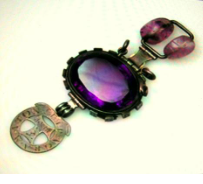
The Purple Sapphire, Natural History Museum
The arrival of the internet has made many more sources of information available. As an example, Heron-Allen contributed no fewer than three hundred and twenty-nine notes and short articles to the periodical Notes and Queries between 1901 and 1941: two hundred and ninety under his name, thirty-eight under the initials, ‘EH-A.,’ and one under his most regular pseudonym ‘Christopher Blayre.’ His contributions discussed such diverse subjects as ballads, bicycles and buses, Britannia, cats, Christian names, fashion, Literature, Shakespeare, Omar Khayyam, pens and ink, place names, quotations and their origins, tobacco, tea, violinists, science and the origin of words. During World War I, Heron-Allen became the commissioner for National Service for West Sussex. As he recounts in his recently published War Journals, he took an officer's course of training and signaling attached to the West Kent Regiment at Tunbridge Wells. He was gazetted a Lieutenant and then joined his foraminiferist friend Chalmers Mitchell in the Military Intelligence Department at the War Office, where he was seconded to MI7 (b). (15) There he edited the Le Courrier de l'Air. Heron-Allen wrote, “Le Courrier de l’Air was, as its title denotes, a propaganda newspaper, planned by Captain Chalmers Mitchell to be distributed by balloon drops over the parts of France occupied by the Germans, and over Belgium, to give the inhabitants of those areas accurate news of the progress of the war from the point of view of the Allies of the Entente. In addition, it contained extracts from German papers, which were suppressed by the government when they had matters reflecting upon adverse conditions in Germany, and accounts of German defeats and losses. The average number of copies distributed weekly was 5,000. He edited the paper until the war's end and managed to visit the front, where his reports fascinated readers.
Scientific Protozoologist’s Career
Heron-Allen regarded his most compelling interest as the rewarding scientific career spanning almost fifty years of working on the foraminifera. He obtained fellowships in several notable London learned societies, namely the Royal Microscopical Society, of which he was later President in 1915, the Linnean Society, the Geological Society, and the Zoological Society, culminating in his election to the Royal Society in 1919. The Royal Society described him as a distinguished Protozoologist whose long-continued and wide-ranging original work upon foraminifera of all seas had significantly advanced the systematic and faunistic knowledge of the group, both British and exotic forms. It also made known to science many new and interesting data relating to their life history, bionomics, and occurrence in space and time of the most important sections of the protozoa. Besides his discoveries, in conjunction with their reproductive processes and remarkable use of material for building, he discovered a curious species that bored into molluscan shells and found a living species known as the Cambrian fossil. It was well known to zoologists that Mr. Heron-Allen was engaged for some years in a comprehensive memoir on the British foraminifera, for which he had accumulated a vast amount of material and descriptions for publication. In 1876, as a schoolboy tutored in Bognor Regis, he published his first article on 'The Geological formation of Bognor' in the Bognor Observer (15), and he tells the story of giving a lecture on foraminifera to a group of thirteen-year-old boys when he was at Elstree school. In 1879, he joined the Quekett Microscopical Club and met and corresponded with like-minded enthusiasts. In 1892, he obtained a Fellowship of the Linnean Society of London and, in the same year, was elected to the Royal Microscopical Society. By 1894, he had produced his first formal scientific publication, which became a practical guide to the preparation and study of fossil forms of the group. (16) As a scientist, Heron-Allen published or co-published (usually in partnership with Arthur Earland) more than 70 papers, mostly on foraminifera. (17). Their collaboration began with a detailed examination of the foraminifera of Selsey. Over the following thirty years, they published studies of the foraminifera of Selsey, Twyford, Cornwall, and Plymouth in England, Clare Island off County Mayo in Ireland and West Scotland, Biarritz, and La Rochelle in France, Nigeria and Kerimbo in Africa, as well as the Suez Canal, the Falkland Islands, The South Atlantic, and the South Pacific. They worked together on the Challenger Collection and the foraminifera from the Discovery expedition. He was also wealthy enough to purchase the collections of other distinguished foraminiferists such as Siddall, Millett, and Lister. From 1909 to 1911, the most ambitious natural history project ever undertaken in Ireland, the Clare Island Survey, was carried out under the auspices of the Royal Irish Academy. Robert Lloyd Praeger, the Irish field botanist, planned and administered the entire project.
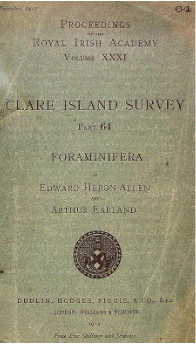
Clare Island Survey Report on Foraminifera, 1913
Edward Heron-Allen and Arthur Earland took part in the survey and visited the island in 1911. Their report on the foraminifera of Clare Island, published in 1913, formed volume 64 of the study published. Heron-Allen and Earland collected from 37 stations from their bases at the Midland Great Western Hotel at Mulranny and later the island itself. They described 14 species new to science and 32 new to the British Isles. The slides the two men made of their material are now in the Natural History Museum, which also houses Heron-Allen’s copy of the report, bound together with all other material, including correspondence, maps, and invoices. Heron-Allen also wrote a daily diary of the fieldwork in the form of letters home, which he bound into a volume, together with postcards, photographs, and ephemera, which, as well as giving valuable information about the working of the survey, provide a snapshot of rural Ireland at the time. (18) One of Heron-Allen’s passions was to collect all the references to foraminifera listed by S.D. Sherborn, the renowned bibliographer, had built a separate library adjoining Large Acres to house his expanding and expensively accumulated library. However, by 1930, he detected damaged books due to the Library’s uncontrolled humidity. He presented his magnificent collections (800 faunal slides, each containing up to 120 species, all cataloged and indexed; 8000 species slides, all recorded and stored in mahogany cabinets; the libraries of most of the distinguished foraminiferists of his time; some 2000 reprints beautifully bound in volumes, etc.) to the Natural History Museum in London. Heron-Allen and his scientific partner Arthur Earland continued their work in separate rooms at the Museum. His collections and library now form the celebrated Heron-Allen Library at the Natural History Museum.
Miscellanea in the Exhaustive Life of a Polymath
Vyvyan Holland, Oscar Wilde's younger son, who often stayed at Heron-Allen’s home at Large Acres, wrote that what most attracted him to Heron-Allen was “his love of collecting things. Apart from his collection of books, which interested him most, he also collected old English silver, glass, china, musical instruments, seals, walking sticks, precious stones, and stamps.”(19) We can add books, scientific literature, scarabs, pebbles, silver spoons, lace, needlework, statues of Tibetan gods, and even an Egyptian Mummy. (20) Heron-Allen wrote to Joseph Cushman, the American foraminiferist, to say that he collected stamps, but only Egypt and current English. We can add local British history ephemera. In the West Sussex Record Office, the seven books of Selseyana, beautifully bound in a ruddy-brown cloth, contain for the years 1906 to 1937 a rich collection of newspaper cuttings, posters, programs, sale particulars, catalogs, annual reports, notices, timetables, postcards, photographs, railway tickets, and invitations. These books chronicle the history of Selsey and its people and tell us a great deal about Heron-Allen himself and his life in the community. One of the first things Heron-Allen did when he started to develop his property at Large Acres in Selsey was to set up a meteorological station. The meteorological records he kept from 1908 to 1923 are also among the collection in the Record Office in Chichester. He then set about writing the history of Selsey. John Cavis-Brown, the Vicar of Selsey, was assisted by Heron-Allen’s research. Cavis-Brown collected material for several years and intended to write a history of the whole peninsula. Heron-Allen had already promised to cooperate with Cavis-Brown on the scientific and prehistoric parts of the book. When the Vicar died in 1909, Mrs. Cavis-Brown presented her husband’s unfinished work and all reference material to Heron-Allen. Co-ordinating his research, Cavis-Brown's notes, and Mary Salmon's investigations in the British Library and the Public Record Office, Heron-Allen published his monumental 400-page Selsey Bill: Historic and Prehistoric in 1911. (21) In the years immediately following the publication of his magnum opus, he published a lecture on Nature and History at Selsey Bill, which he delivered in Chichester and London, and the Visitors Map and Guide to Selsey. Then, in the 30s., he published his Guide to the Parish Church of St. Peter on Selsey Bill. In 1912, he became the local secretary of the Sussex Archaeological Society. In the pages of its transactions, he published articles on some Roman imperial Coins found at Selsey in 1909 and a series of other finds over the next thirty years, most notably the celebrated Selsey hoard in 1932, the Selsey map of 1672, and the Selsey Volunteers. Towards the end of his life, in partnership with Harriet James, he published articles in the Sussex County Magazine on subjects as various as Treasure Trove in Selsey, the Sussex Martlets, the Long Man of Wilmington, Ecclesioclasm in Sussex, and the early Chichester Guidebooks. But he was not just a writer on archaeological subjects. Together with Claude Bishop of Norton Priory and L.F. Salzman, the editor of Sussex Archaeological Collections, Heron-Allen took part in the excavations of the Mound at Church Norton and correctly maintained until the end of his life that it was the actual site of Selsey Cathedral. Six volumes of miscellanea relating to his history of Selsey, compiled by Heron-Allen and containing his notes, photographs of many of the documents and artifacts that he used, his correspondence with fellow scientists, archaeologists, and antiquarians, and another excellent selection of postcards, are preserved at the West Sussex Record Office. Heron-Allen was not just the chronicler of the history and archaeology of Selsey; he also played an active role in his local community. He was a major shareholder in, and for many years, the Chairman of The Hundred of Manhood and Selsey Tramway Company, popularly known as 'The Selsey Tram.' In 1911, he became Commissioner of Boy Scouts for West Sussex and held the post until the end of the First World War. At the outbreak of war in 1914, he organized Scout Patrols of the Sussex coast and raised and equipped a large troop from Selsey. In 1917, he became a District Commissioner for National Service for South-West Sussex. Professor Brian Harvey edited Heron-Allen’s detailed diaries of life in Selsey during the First World War. He published the diaries From Sussex Shore to Flanders Field: Journal of the Great War by the Sussex Record Society in 2002. (22) His other interests included the Buddhist religion, which resulted in his collecting statues of Thibetan gods and the Sette of Odd Volumes publication (Opuscula No. 92) of his book The Gods of the Fourth World in 1931. (23)

Opuscula No. 92, Sette of Odd Volumes
In 1917, he began his experiments in the culture of asparagus, which took him 16 years to bring to a successful issue. In his pamphlet entitled Asparagus as a Hobby for Amateurs and Epicures, he created a variety named' the Selsey Giant' in 1934. (24) Such was the resultant demand for seeds that he had to hand over the distribution to Suttons of Reading. He wrote on asparagus for the Wine and Food Society. Heron-Allen, Vyvyan Holland, A.J.A Symons, and Andre Simon were involved in the early days of the Society. As a very young man, he wrote a series of articles on carnations in a gardening journal. Later, Heron-Allen was President of the National Auricula Society and, at one time, owned the manuscript notes on auriculas by the legendary seventeenth-century expert Samuel Brewer. Lastly, He even invented a lotion for dealing with hypodermarikosyringophoroi in 1931. This lotion was effective against horse flies, stings by bees, wasps and hornets, fleas, and mosquitoes. He tested it on the Selsey locals. The lotion was called S'Kitakura. Heron-Allen gave the recipe to a local dispensing chemist in Selsey. A private company, S'Kitakura Ltd, sold the lotion in Hong Kong, Nairobi, Calcutta, Cape Town, and Czechoslovakia. The advertising slogan was: It heals the bites and cures the stings of things with legs and things with wings. (25)
Brief Notes
-
Brian W. Harvey, Allen, Edward Heron- (1861-1943) in Oxford Dictionary of National Biography, September 23,(2004) https://www.oxforddnb.com/view/10.1093/ref:odnb/9780198614128.001.0001/odnb-9780198614128-e-53069
-
Brian W. Harvey and Carol Fitzgerald, Edward Heron-Allen’s Journal of the Great War: From Sussex Shore to Flanders Field (Chichester: Phillimore, 2002)
-
Edward Heron-Allen, The Ancestry of the Violin. De Opusculae Fidicularum. Opusculum 1 (London: Mitchell & Hughes for the Author, 1882)
-
Edward Heron-Allen, How the Strolling Players Amateur Orchestral Society was Founded and Started’ in The Violin Times, 1:2 (1893), 27
-
Edward Heron-Allen, ‘An Afternoon with Chanot.’ Unpublished MS at Royal College of Music, London. See Joan Navarre, “An Afternoon with Chanot”: Remembering Georges Chanot, Edward Heron-Allen, and 157 Wardour Street, in Peter Horton, (ed.), ‘Edward Heron-Allen and Music’: Proceedings of the 6th. Heron-Allen Symposium, 2006 (Chichester: Heron-Allen Society, Opusculum IX, 2006), 32-9
-
Edward Heron-Allen, Violin Making as it was and is (London: Ward, Lock & Co., 1884)
-
Gil Solomon, ‘Beginners Luck,’ The Strad, vol.114, no.1354 (Feb. 2003), 160-3
-
Edward Heron-Allen, Violin Making, as it was and is (London: Ward Lock & Co., 1884)
-
Edward Heron-Allen, De Fidiculis Bibliographia (London: Griffin Farran Okedan & Welsh, 1890-1894)
-
Pamela Thompson, The Edward Heron-Allen Collection at the Royal College of Music Library in Fontes Artis Musicae, 55, no.3, (2008), 474-483
-
Wm. Meredith Morris, British Violin -Makers (London: Chatto & Windus, 1904), 58-62
-
Edward Heron-Allen, Codex Chiromantiae, Opuscula No. 7 (London: C.H. Wyman for the Sette of Odd Volumes, 1883)
-
Edward Heron-Allen, The Ruba'iyat Of Omar Khayyam. A Facsimile of the Manuscript in the Bodleian Library at Oxford, With a Transcript Into Modern Persian Characters (London: H.S. Nichols, Ltd., 1898)
-
Claire Powell, ‘The Edward Heron-Allen collection of Editions of Omar Khayyam and Edward Fitzgerald at the London Library,’ in Timothy J. McCann, (ed.), ‘Portraits and Persia: Bookplates and Bognor.’ Proceedings of the 3rd. Heron-Allen Symposium, 2003 (Chichester: Heron-Allen Society, Opusculum VI, 2003), 8-10
-
Edward Heron-Allen, ‘First World War leaflets and Le Courrier de L’Air;’ in The Falling Leaf, 177, (2002), 47-50
-
Timothy J. McCann, ‘My first Appearance in print: Edward Heron-Allen, the Rev. W.B. Philpott and the Geology of Bognor,’ (Chichester: Heron-Allen Society, Opusculum VI, 2003), 24-8
-
Edward Heron-Allen, Prolegomena towards the study of the chalk foraminifera (London: H.S. Nichols & Co.), 1894
-
Richard L. Hodgkinson and John E. Whittaker, ‘Edward Heron-Allen FRS (1861-1943): a review of his scientific career, with an annotated bibliography of his foraminiferal publications, in Archives of Natural History, 31, (1), (2004), 6-29
-
Vyvyan Holland, Time Remembered after Pere Lachaise, (London: Victor Gollancz Ltd, 1966), 132
-
Joann Fletcher, ‘Edward Heron-Allen, His Friends and their Mummies; EH-A and Ancient Egypt,’ in Timothy J. McCann, (ed.), Edward Heron-Allen and Friends. Proceedings of the 6th. Heron-Allen Symposium 2005. Opusculum VIII (2005), 17-44
-
Edward Heron-Allen, Selsey Bill, Historic and Prehistoric (London: Duckworth & Co., 1911)
-
Brian W. Harvey and Carol Fitzgerald, Edward Heron-Allen’s Journal of the Great War: From Sussex Shore to Flanders Field. Sussex Record Society, vol. 88, (2002)
-
Edward Heron-Allen, The Gods of the Fourth World, being Prolegomena towards a Discourse upon the Buddhist Religion and its acquired Pantheon. Sette of Off Volumes, Opusculum no. xcii, 1931
-
Edward Heron-Allen, Asparagus as a Hobby for Amateurs and Epicures. Bognor Regis. Southern Post, 1934
-
Timothy J. McCann, ‘Skitakura: or Science with a Sting,’ in Heron-Allen Society Newsletter, no.8, (2006), 5-6
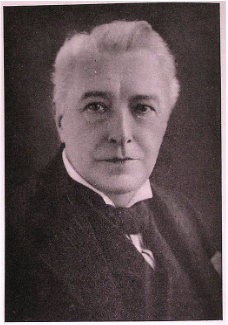
Edward Heron-Allen, 1943